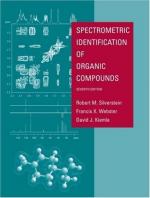|
This section contains 609 words (approx. 3 pages at 300 words per page) |

|
Organic materials are composed of a mixture of carbohydrates, lignins, tannins, fats, oils, waxes, resins, proteins, minerals, and other assorted compounds. With the exception of the mineral fraction, the organic compounds are composed of varying ratios of carbon and nitrogen. This is commonly abbreviated to the C:N ratio. Carbohydrates are composed of carbon, hydrogen, and oxygen and are relatively easily decomposed to carbon dioxide and water, plus a small amount of other by-products. Protein-like materials are the prime source of nitrogen compounds as well as sources of carbon, hydrogen, and oxygen and are important to the development of the C:N ratio and the eventual decomposition rate of the organic materials.
The aerobic heterotrophic bacteria are primarily responsible for the decay of the large amount of organic compounds generated on the earth's surface. These organisms typically have a C:N ratio of about...
|
This section contains 609 words (approx. 3 pages at 300 words per page) |

|


